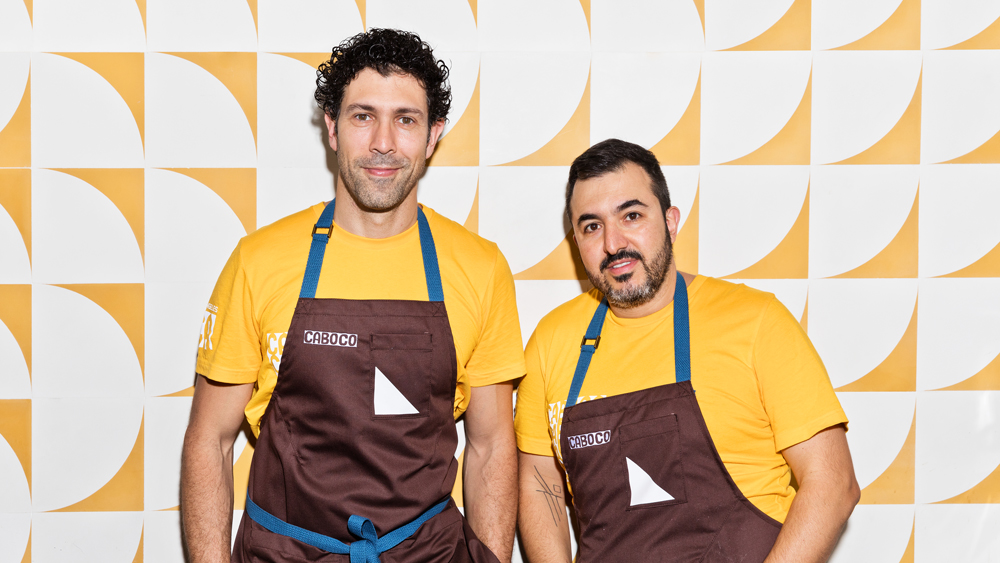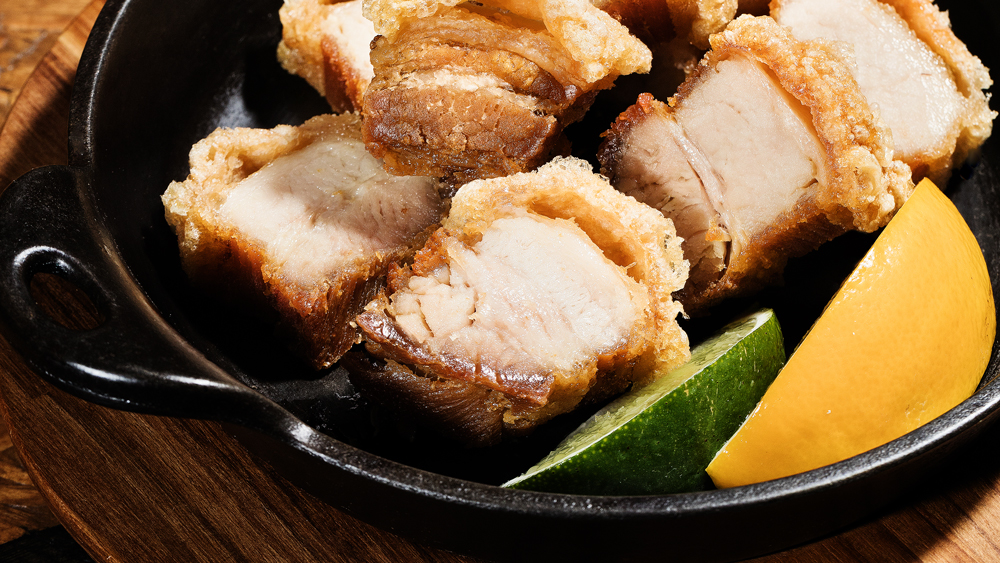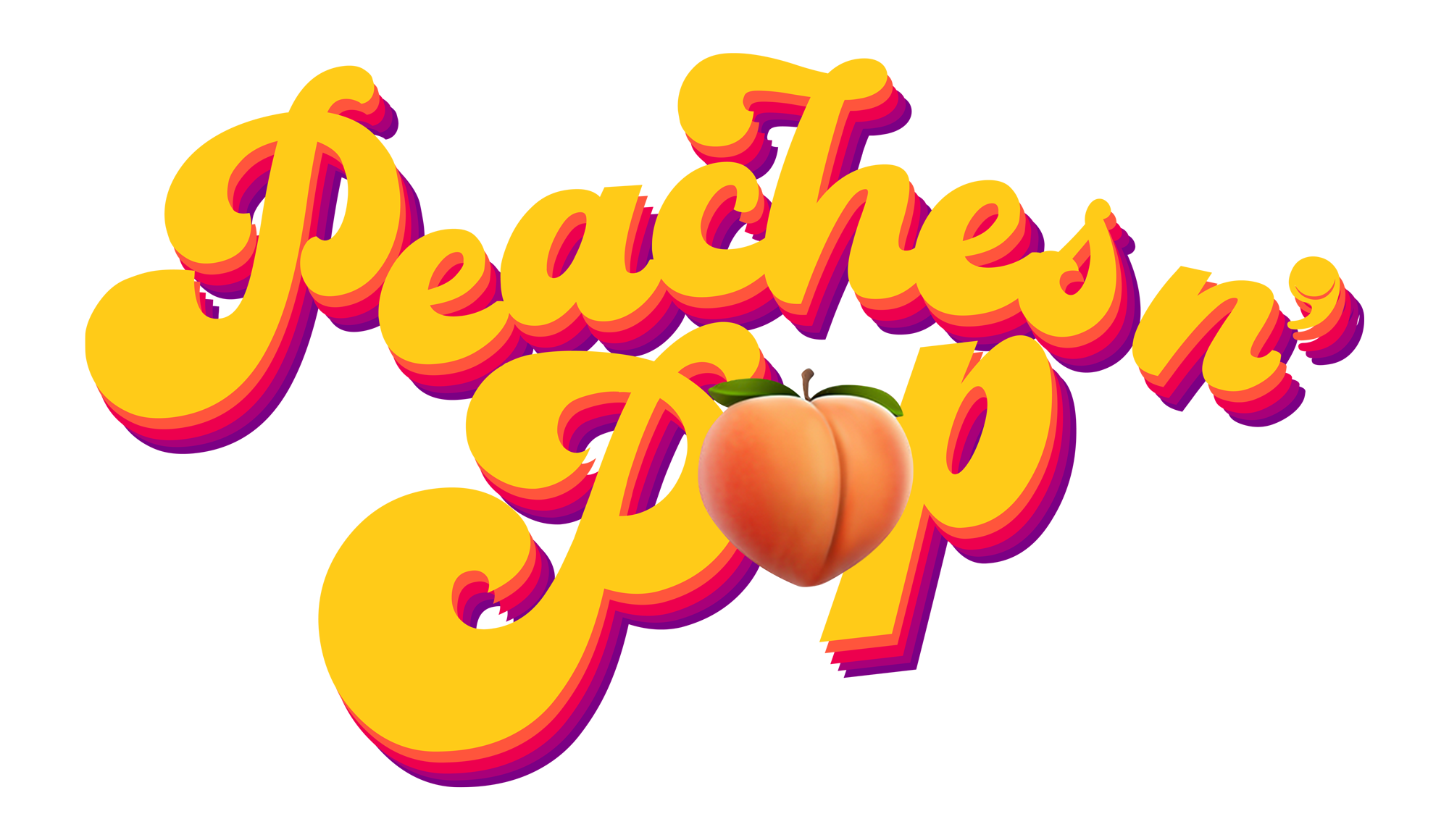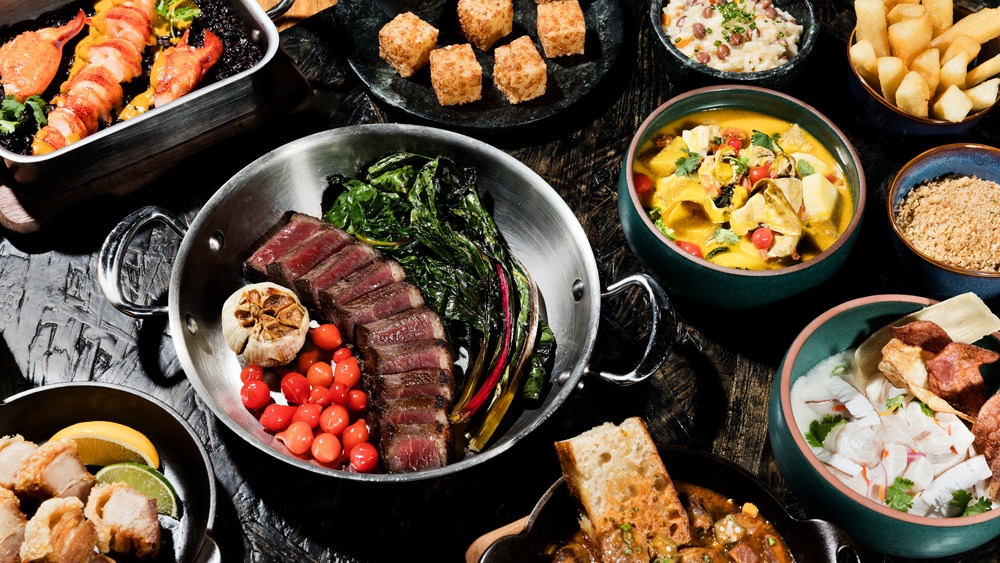Rodrigo Oliveira is letting Angelenos experience something beyond the churrascaria.
Rodrigo Oliveira, the celebrated Brazilian chef behind São Paulo’s Mocotó and Balaio IMS, has received many “tempting invitations” to expand around the world. He’s been approached about deals in New York, London and Asia. But for Oliveira’s first restaurant outside of Brazil, he and fellow chef-partner Victor Vasconcellos chose Los Angeles because it reminds them of São Paulo’s beautifully frenetic energy.
“LA is big, diverse and chaotic in a way,” Oliveira says. “Me and Victor, coming from São Paulo, we felt at home immediately.”
They realized that Los Angeles, with its free-spirited cooking and boundary-breaking food scene, is an ideal place to showcase the range and power of their Brazilian cuisine. So Caboco, Oliveira’s new restaurant in LA’s Arts District, opened in September with modern Brazilian food unlike anything the city has ever seen.
“It’s important to show that Brazil is part of this movement of Latin cuisine,” says Oliveira, whose Mocoto has been a fixture on the Latin America’s 50 Best Restaurants list. “That’s pretty new. Maybe 10 years ago, we didn’t feel we were part of this movement.”
Both Oliveira and Vasconcellos credit churrascarias for introducing Americans to Brazilian food. They respect those beef-centric restaurants, but they want to do something different. And they’re not shy about expressing their lofty ambitions.
“In LA, we want to present Brazilian food that is not very well-known,” Vasconcellos says. “We want to bring something that is more modern. We want to elevate Brazilian gastronomy and present it properly to the world.”

Rodrigo Oliveira and Victor Vasconcellos.
Photo: courtesy Dylan+Jeni
Maybe the most striking example of how Caboco isn’t a churrascaria is a vegan dish. Caboco makes a version of moqueca (a rich stew that usually contains seafood) with cashew fruit. This tropical fruit, something most Los Angeles residents have likely never encountered, is sweet, acidic and a little savory. It’s also meaty, and Caboco cooks the cashew fruit to a texture that resembles dried mushrooms. The stew also has other nourishing produce like hearts of palm and plantains, and the moqueca’s yellow broth with yuca and coconut adds brightness, depth and umami. Eat the stew over rice for a deeply comforting meal.
Caboco is a restaurant that proudly shines a light on the versatility of Brazilian ingredients. Yuca shows up in many dishes. Oliveira and Vasconcellos use this root vegetable as both a foundation and a flourish. The moqueca comes with farofa, which is toasted yuca flour that adds earthiness and a lovely crunch.
Caboco is also frying yuca, fermenting yuca, extracting the starch from yuca, playing around with many yuca flours and putting yuca into various sauces. Oliveira wants guests to understand that Brazilians use yuca the way that Mexicans use corn. It can be a canvas for anything.
“It’s a way to present Brazil that we believe is not known yet in America or other parts of the world,” Oliveira says.
Oliveira is in LA to make contemporary Brazilian food with world-class ingredients, but he points out that a lot of what he does is steeped in tradition. A steak dish, which comes with yuca fries, involves curing picanha for five to six days.
“It’s a process we have in Brazil to make meat last longer,” he says. “It’s especially used in the Northeast, where my family came from. It was out of necessity. There was no electricity, no refrigerators. But as a side effect, the meat gets more tender and tasty.”

This decadent pork can’t be missed.
Photo: courtesy Dylan+Jeni
Even what seems like a simple one-ingredient dish at Caboco involves a time-consuming process. The little hunks of glistening pork belly known as torresmo are accurately described on the menu as “pork belly, crispy outside, juicy inside. That’s it.” But even if you’ve eaten a large amount of porchetta, lechon, Cantonese barbecue or pork cracklings in your life, the contrast between the crispiness and juiciness might floor you.
Oliveira says he’s still figuring out how to perfect this dish in LA, where he’s using different pork than what he gets in Brazil, but it’s already stunning. Calibrating the correct ratio of meat to fat to skin takes a lot of work. Making torresmo at Caboco requires two to three days of preparation that includes carefully slicing pork belly, brining it for at least 10 hours and then cooking it three different ways inside an oven. Then the meat is refrigerated, sliced again, fried twice at different temperatures and reheated before it’s served.
Oliveira and Vasconcellos are proud to show LA a wide spectrum of Brazilian food, but they’re also here to discover new things. Not surprisingly, they’re enamored with California ingredients like heirloom tomatoes, squash, mushrooms, beans, uni, fish and cheese. Going to the farmers market with lead bartender Marcus Ragas to find citrus, including Eureka lemons, for Caboco’s caipirinha and cachaça bar has been illuminating.
This LA adventure is just beginning. So far, Caboco has put edamame, fava beans and spinach, among other produce, into its moqueca. Oliveira is excited to see how this dish evolves as the seasons change.





